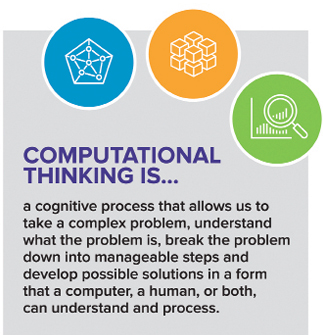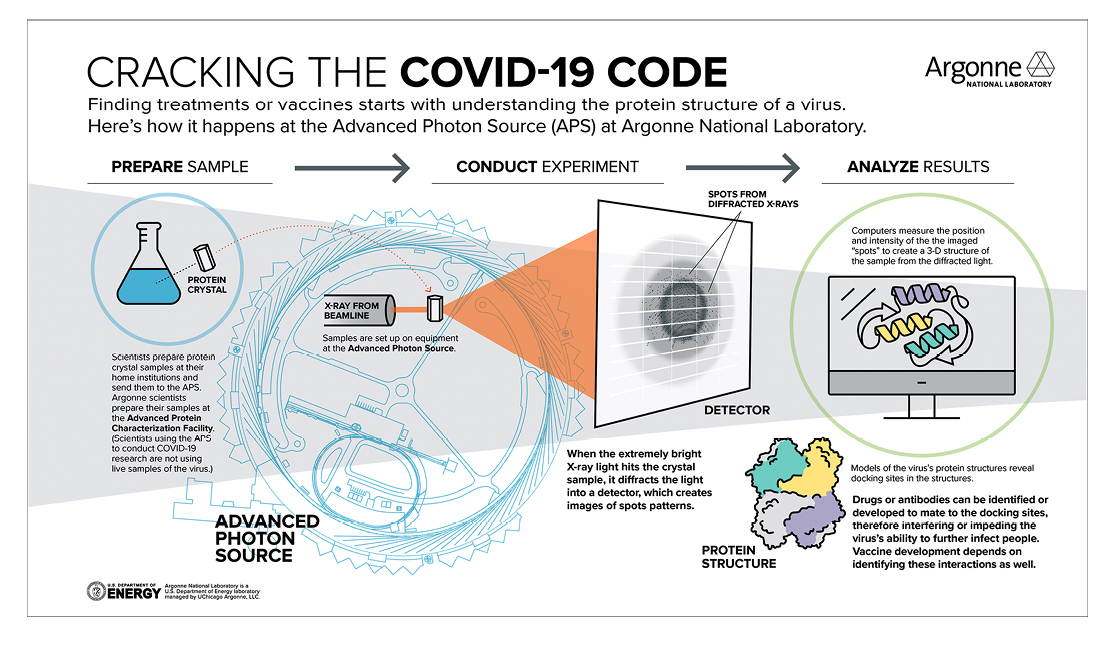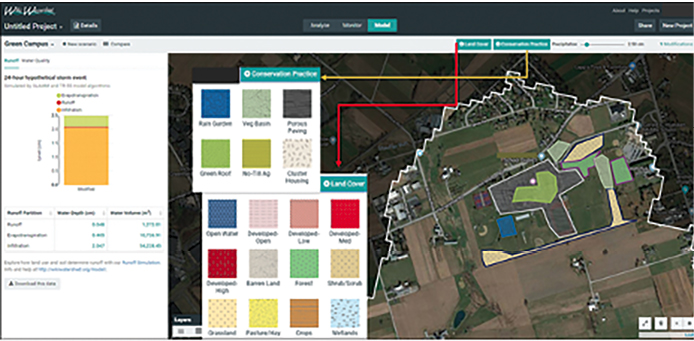commentary
Does This Count as Work?
Nurturing computational thinking in the science classroom
The Science Teacher—July/August 2022 (Volume 89, Issue 6)
By Nanette Marcum-Dietrich, Meridith Bruozas, and John Domyancich
The Next Generation Science Standards (NGSS) challenge teachers to incorporate authentic investigation into the classroom, including eight distinct scientific practices (NGSS Lead States 2013). Some of the more commonly integrated practices, such as Asking Questions and Defining Problems, Analyzing and Interpreting Data, and Engaging in Arguments from Evidence, are essential features of scientific inquiry.

Other scientific practices, however, are not fully integrated into science classrooms. For example, Using Mathematics and Computational Thinking is a practice that is too often marginalized. We may think that the act of students collecting numerical data and constructing graphs and tables demonstrates Mathematics and Computational Thinking (CT) in science, but we would be wrong. Computational thinking is a cognitive process that allows us to take a complex problem; understand what the problem is; break the problem down into manageable steps; and develop possible solutions in a form that a computer, a human, or both can understand and process (Cuny, Snyder, and Wing 2010; Aho 2011; Lee 2016).
The role of CT in the science classroom
As teachers, can we identify problems where CT skills should be used? In addition, do we encourage students to leverage CT practices to solve problems? Let me give you an example; recently, my 15-year-old son was working on his science homework. The assignment required him to create a scale model of geologic time and locate several significant events. He was instructed to use the length of a football field (100 yards) as the scale, and to convert the dates of each significant event to yard lines. The directions explicitly told him to SHOW HIS WORK! The list was long; he needed to convert 25 significant geologic events to yard lines. The task quickly became tedious. Annoyed, my son blurted out, “This is taking too long! I’m just going to program my calculator to do this for me.” He grabbed his TI-84 calculator and wrote the following program:
00 { 20-Byte Prgm }
01 LBL “EARTH”
02 4.54
03 ÷
04 100
05 ×
06 .END.
I was amazed and filled with more than a little motherly pride! Without prompting, he had identified a task where scientific practices, namely, computational thinking skills, are useful. For this task, he prepared the problem for CT by identifying the relevant algorithm, and he wrote a program that a computer, a TI-84 calculator, could run. His homework was completed in a fraction of the time, but I worried. I asked him, “Will the teacher give you credit for the assignment if you don’t do the calculations by hand?” In other words, would his CT skills be valued by his teacher? Would the use of CT skills count as valuable scientific work?
CT has its roots in computer science, and much of the current discussion on what computational thinking is and how it should be implemented in the science classroom is influenced by the computer science education community. Still, CT is not simply computer programming; instead, it is a thought process that includes a collection of distinct skills we can use to tackle data-rich problems. As science teachers, we want our students to be problem solvers. We want our students to use the scientific practices authentically, but are we, as teachers, able to recognize, nurture, and value students’ CT skills?
NGSS provides us with some initial guidance: “Students are also expected to engage in computational thinking, which involves strategies for organizing and searching data, creating sequences of steps called algorithms, and using and developing new simulations of natural and designed systems” (NGSS Lead States 2013, Appendix F, p. 10). As you can see, CT is more than coding; it is computational problem solving that uses algorithmic thinking and coding (Angeli and Giannakos 2020), all essential tools for today’s scientific community. Therefore, it is useful to see how scientists, whose approaches form the foundation of the Science and Engineering Practices, apply CT in their work.
Using CT in the scientific community
We live in a data-rich world. As a result, science today is fundamentally different, thanks in no small part to advances in computing. The ability to collect and analyze vast amounts of data has gotten easier. CT practices provide the cognitive tools and skills necessary to use large data sets to investigate and solve complex scientific problems. In this big data world, virtually every scientific field is inextricably linked to computational thinking, and doing science requires scientists to merge their domain knowledge with a CT mindset.
COVID-19
During the COVID-19 global pandemic, the race to develop vaccines is a prime example of a CT-rich problem. Data and computational problem-solving allowed scientists to move much more efficiently to develop treatments. Researchers at Argonne National Laboratory and partner institutions analyzed protein crystals derived from the SARS-CoV-2 genome at Argonne’s Advanced Photon Source. By shining intense x-rays on these crystals, diffraction patterns are created that are stored as massive amounts of data. In the past, these data sets would take years to analyze and translate into useful information. Fortunately, scientists leveraged high-speed computers and algorithms to crunch this data and determine the precise arrangement of atoms within the virus’s protein structures within weeks, not years. This knowledge allowed scientists to quickly identify and develop drugs and antibodies that “throw a wrench” in the virus’s machinery.

Climate Change
Climate change represents perhaps the most significant challenge that humanity has ever faced. Fortunately, CT helps scientists understand it better and propose solutions. Researchers at Argonne’s Atmospheric Radiation Measurement (ARM) User Facility study the complex dynamics of energy movement within our atmosphere. For these scientists, climate change is a CT problem. By considering the role that the sun, clouds, precipitation, atmospheric gases, and many other factors play in the movement of energy throughout the atmosphere and its effect on global temperatures and climate, these scientists must use systems thinking. From this, they leverage the modeling and simulation practices to design complex computer models that can predict how the climate will change in response to our efforts, or lack thereof, to reduce carbon emissions.
Environmental Stewardship
Advances in personal computing and web-based servers make scientific-grade CT tools accessible to students. Model My Watershed® (MMW) is a powerful free online modeling tool for citizens, conservation practitioners, municipal decision-makers, educators, and students developed by the Stroud™ Water Research Center. Its interface is easy to use, but behind the welcoming interface is a computationally rich, professional-grade scientific application that incorporates immense national data sets from the United States Department of Agriculture (USDA), Natural Resources Conservation Service (NRCS), United States Environmental Protection Agency (USEPA) and others.
MMW provides an intuitive, data-rich, web-based environment for studying and predicting the impacts of different land-use practices on runoff and water quality. Teachers and students use this professional scientific-grade online software to access environmental data sets, select and analyze data for their schoolyard, and create and model scenarios in which they try to increase the amount of infiltration and improve the water quality at their school study site. MMW’s outputs can inform stewardship projects and motivate students to engage in environmental action. In short, MMW gives students access to real data, real scientific models for real places, and allows them to make real decisions about their environment.
CT and today’s youth
Reflecting on the example of my son’s geological time scale homework, he used CT skills that were honed not in school but at summer coding camp. With this basic knowledge, he refined his coding skills by developing online games at home. In game design, he faced computational problems and found solutions via an online community and by watching many instructional YouTube videos—he used scientific practices that were acquired in informal learning environments to tackle problems he found interesting. As teachers, we can take inspiration from these informal collaborative environments to enhance school instruction.
As is common at many research laboratories across the country, Argonne Education connects the authentic science research that their scientists conduct with students by creating learning environments that put students in decision-makers’ roles. Each summer, Argonne Education offers a Big Data Camp where scientific and societal problems are presented in a CT and data-driven context. For example, last summer, students at Big Data Camp used public health and demographic data to uncover the driving factors of COVID-19’s disparate impacts on communities within Chicago. To do this, we took inspiration from an actual research study by University of Chicago researcher Kevin Credit and adapted it for students. By considering the approach used by the professional, such as the questioning process and data analysis, we created an authentic investigation that gave students ownership of the problem. Using professional tools such as Jupyter notebooks, Python, and the geospatial platform Kepler, students learned skills that will drive future investigations beyond this camp.
Integrating CT into the classroom
The same skills we hope to instill in our secondary science students (problem-solving, creativity, and risk-taking) are endemic to informal learning spaces, but the traditional classroom often emphasizes structure and defined paths to success. As classroom teachers, we have a curriculum to cover, and, sadly, the most efficient route to meeting these curricular demands is linear, with defined content and prescribed solutions. This divide between informal and formal learning suggests that learning in one domain is not easily transferred to the other. Classroom experiences can be designed to teach defined learning goals while nurturing the collaborative and creative culture of informal CT learning environments.
CT is a complement to existing science content learning. While today’s scientists rely on CT tools and practices, it is essential to remember that solutions to these complex problems are still rooted in fundamental science concepts (structure of mRNA, gas laws, content in context). Therefore, science instruction must still address traditional science content while adapting to provide students with an environment that gives them more ownership of the learning experience and honors the skills and knowledge they have developed through informal experiences.
Not all scientific problems are best investigated with CT. The first step is choosing a scientific topic and problem where CT practices are essential for investigating and/or proposing a solution. Scientific problems that are data-rich tend to benefit the most from the use of CT practices because these problems are complex and require students to determine the appropriate data to collect (data aggregation), break the problem down into more manageable steps (decomposition), identify patterns in existing data (pattern recognition), reduce the complexity of the data (abstraction), account for missing or incomplete data (interpolation, extrapolation), and test rules or algorithms (rule refinement, rule testing)—helping students to describe the problem and make predictions. Emerging fields are looking for STEM problem solvers: individuals who have a solid knowledge base of science, technology, engineering, and math (STEM), along with the ability to use computational thinking skills.

Remembering that the eight scientific practices, CT included, are intended to equip students with the cognitive tools needed to use their “science content understanding to investigate the natural world through the practices of science inquiry or solve meaningful problems through the practices of engineering design” (NGSS Lead States 2013, Appendix F, p. 1) it is the teacher’s job is to provide students with opportunities to develop and use CT skills in the science classroom. In this big data world, CT is indeed an essential scientific practice for the next generation and a skill that deserves attention in today’s secondary science classroom.
Acknowledgments
This material is based upon work supported by the National Science Foundation under Grant Nos. DRL-1850060 and DRL-1849719. Any opinions, findings, and conclusions or recommendations expressed in this material are those of the author(s) and do not necessarily reflect the views of the National Science Foundation.
Nanette Marcum-Dietrich (ndietrich@millersville.edu) is a professor at Millersville University, Millersville, PA. Meridith Bruozas (mbruozas@anl.gov) and John Domyancich (jdomyancich@anl.gov) are researchers at Argonne National Laboratory, Lemont, IL.
Computer Science Pedagogy Teaching Strategies Technology


